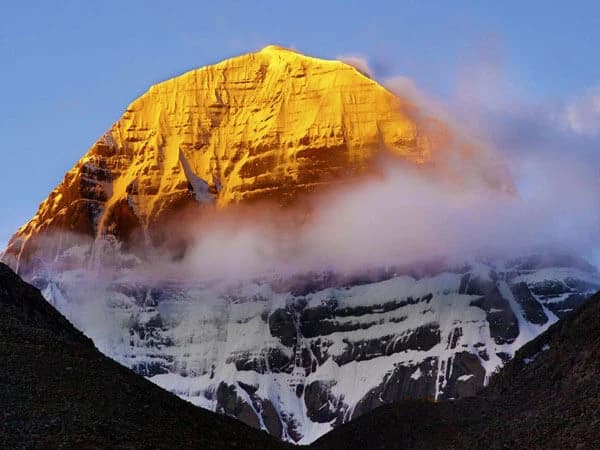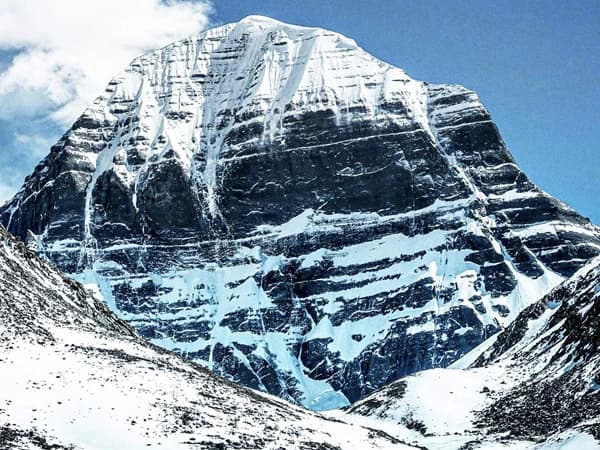Kailash Mansarovar Helicopter Tour from Kathmandu – 15 Essential Insights
The Kailash Mansarovar Helicopter Tour from Kathmandu is one of the most popular and convenient spiritual journeys for Hindu, Buddhist, Jain, and Bon pilgrims worldwide. Unlike the lengthy and physically challenging overland routes, this 11-day Kailash Mansarovar Helicopter Yatra provides the fastest route to Mount Kailash and Lake Mansarovar, combining comfort, spiritual fulfillment, and breathtaking Himalayan adventure. Below are 15 detailed and essential points that cover everything you need to know about this divine journey.
1. Introduction to the Kailash Mansarovar Helicopter Tour
The Kailash Mansarovar Helicopter Tour is designed for those who want to undertake the sacred Kailash Yatra but have limited time or wish to avoid long, strenuous trekking. This tour begins in Kathmandu, Nepal, and lasts for 11 days, making it one of the shortest and fastest routes to reach the holy sites of Mount Kailash (6,638m) and Lake Mansarovar.
- Mount Kailash is revered as the cosmic axis and spiritual center of the world.
- Lake Mansarovar is the holiest freshwater lake in Asia, believed to wash away sins and bring spiritual liberation.
Unlike the overland route from India or Tibet, the helicopter route from Nepal saves both time and physical hardship while still offering an immersive experience.
2. Why Choose the Helicopter Route?
The traditional Kailash Mansarovar Yatra can take up to 22–25 days by road and requires high levels of physical stamina for trekking. However, the Kailash Yatra by Helicopter shortens the duration to 11 days, making it ideal for elderly pilgrims, time-bound travelers, and those seeking more comfort.
Key benefits include:
- Fastest access from Kathmandu to Kailash Mansarovar.
- Helicopter flights between Simikot and Hilsa, avoiding long treks.
- Lesser exposure to high-altitude fatigue compared to overland journeys.
- Suitable for pilgrims aged 10–70 with moderate fitness levels.
This route blends adventure, spiritual devotion, and cultural exploration in the most convenient way possible.
3. Spiritual Significance of Mount Kailash
Mount Kailash is not just a mountain—it is the ultimate spiritual destination for millions of devotees worldwide.
- Hinduism: Mount Kailash is considered the abode of Lord Shiva and Goddess Parvati. Circumambulating the mountain (known as Kailash Parikrama) is believed to grant moksha (liberation).
- Buddhism: It is seen as the center of the universe, representing the axis mundi in Buddhist cosmology.
- Jainism: Kailash is believed to be the site where the first Tirthankara, Rishabhadeva, attained spiritual liberation.
- Bon religion: Followers worship it as the seat of the spiritual master Tonpa Shenrab.
Every step on this sacred land carries immense spiritual energy, making it a life-changing pilgrimage.
4. Importance of Lake Mansarovar
At the foot of Mount Kailash lies Lake Mansarovar (4,590m), one of the highest freshwater lakes in the world. The lake is perfectly round, representing purity and divinity.
- Taking a holy dip in Lake Mansarovar is believed to cleanse the soul of sins from many lifetimes.
- Performing rituals, meditation, and puja at its shores is thought to bring inner peace, blessings, and spiritual enlightenment.
- Pilgrims often collect water from Mansarovar to carry home for rituals.
Surrounded by breathtaking Himalayan peaks, this serene lake is a highlight of the Kailash Mansarovar Helicopter Tour.
5. Tour Route – Kathmandu to Kailash Mansarovar
The 11-day helicopter tour begins in Kathmandu and follows this route:
- Kathmandu → Nepalgunj: Short flight to the western Terai town.
- Nepalgunj → Simikot: Scenic mountain flight to the remote gateway of Humla district.
- Simikot → Hilsa (by helicopter): Quick flight with breathtaking Himalayan views.
- Hilsa → Taklakot (Tibet): Cross the Nepal–China border on foot, then drive.
- Taklakot → Lake Mansarovar: Drive across Tibetan plateaus to the sacred lake.
- Mansarovar → Darchen → Kailash Parikrama: Begin the circumambulation trek or optional kora by vehicle (where allowed).
- Return via the same route back to Kathmandu.
This combination of flights, helicopter transfers, and road drives ensures maximum comfort while covering vast distances in a short period.
6. Scenic Helicopter Experience from Simikot to Hilsa
One of the most thrilling parts of the journey is the helicopter ride between Simikot and Hilsa.
- The flight offers breathtaking views of the snow-capped Himalayas, lush valleys, and remote mountain terrain.
- It avoids a 5–6 day trek through villages like Dharapori, Kermi, and Yalbang.
- For adventure lovers, the trekking option is still available, but most pilgrims prefer the helicopter route for speed and comfort.
This is what makes the Kailash Mansarovar Helicopter Tour the fastest route to Kailash.
7. Simikot – The Gateway to Kailash
Simikot (2,910m) is a small yet culturally rich mountain town in northwestern Nepal.
- It is surrounded by remote Himalayan landscapes and traditional villages.
- Trekkers and pilgrims often acclimatize here before heading toward Hilsa.
- Simikot provides a unique opportunity to witness local Tibetan-Nepali culture, ancient monasteries, and mountain life.
This gateway town is a crucial part of the journey, offering a glimpse into life in one of Nepal’s most isolated regions.
8. Crossing the Nepal–Tibet Border
At Hilsa, travelers cross a suspension bridge on foot into Tibet (China).
- After crossing, a Tibetan guide and vehicle arranged by the tour operator will receive the group.
- This border crossing is both adventurous and symbolic—it marks the transition from the lush Himalayan valleys of Nepal to the vast Tibetan plateau.
- Pilgrims begin to feel the high-altitude environment, making acclimatization important.
This moment also symbolizes the blending of two ancient cultures: Nepali and Tibetan.
9. Cultural Exploration in Tibet
The journey in Tibet is not just about spirituality but also about experiencing Tibetan culture.
- Pilgrims witness Tibetan monasteries, prayer flags, and stupas along the journey.
- The town of Taklakot (Purang) offers glimpses of Tibetan trade and lifestyle.
- Pilgrims can experience local cuisine, traditional attire, and ancient Buddhist traditions.
This cultural exchange adds richness to the spiritual experience.
10. Holy Kailash Parikrama (Circumambulation)
The Kailash Parikrama (Kora) is the most important part of the pilgrimage.
Key points include:
- Darchen – the starting point.
- Dirapuk Monastery – offering stunning views of Kailash’s north face.
- Dolma La Pass (5,630m) – the highest point of the kora, symbolizing spiritual cleansing.
- Zuthulpuk Monastery – completing the circuit.
Though challenging, completing even a partial parikrama is considered highly auspicious.
11. Best Time for Kailash Mansarovar Helicopter Tour
The journey is seasonal and depends on weather conditions.
- Best months: May to September.
- Avoided months: Winter (October–April) due to heavy snow and extreme cold.
During summer, the weather is relatively stable, making helicopter flights and road travel smoother. Pilgrims also enjoy clear views of the sacred mountain and lake.
12. Physical Fitness & Health Considerations
Although the helicopter route minimizes trekking, high altitude remains a challenge.
- Pilgrims reach altitudes above 5,000 meters during the kora.
- Symptoms of altitude sickness (headache, nausea, fatigue) are common.
- It is important to acclimatize in Simikot and Taklakot before proceeding.
Doctors usually recommend basic fitness, gradual walking practice, and consulting with healthcare providers before the journey.
13. Cultural & Religious Rituals at Mansarovar
At Lake Mansarovar, pilgrims perform several rituals:
- Taking a holy dip in the lake.
- Performing puja, meditation, and havan on its banks.
- Offering prayers to Lord Shiva and Goddess Parvati.
- Buddhists often practice meditation here, believing it enhances inner peace.
These rituals create the most spiritually rewarding moments of the journey.
14. Essential Travel Tips for Pilgrims
To ensure a smooth pilgrimage, keep in mind:
- Carry warm clothing, oxygen cylinders, and personal medicines.
- Travel light but include essentials like sturdy shoes, sunglasses, sunscreen, and water bottles.
- Respect local traditions and follow instructions from guides.
- Be mentally prepared for basic facilities in remote regions.
Well-prepared pilgrims enjoy the journey more and avoid unnecessary difficulties.
15. A Life-Changing Journey
The Kailash Mansarovar Helicopter Tour from Kathmandu is more than just a trip—it is a spiritual awakening. By combining the fastest helicopter route, cultural immersion in Nepal and Tibet, and the sacred darshan of Kailash and Mansarovar, this 11-day yatra offers lifelong blessings and memories.
Whether you are seeking spiritual liberation, cultural exploration, or Himalayan adventure, this tour fulfills every dream. For many, completing this pilgrimage is not just a journey but a divine calling.














